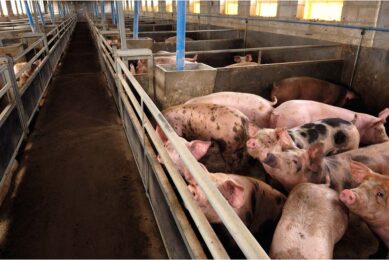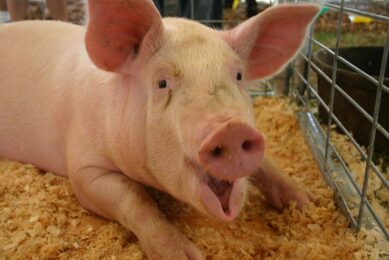BLOG: Diseases running west

There is a somewhat unwanted parallel between North America and Europe at the moment, as in both continents, feared pig diseases are around – and they are moving west.
In Europe, African Swine Fever (ASF) has entered the European Union. At the moment of writing, the virus was confirmed in three wild boars, two in Lithuania and one in Poland.
The first outbreak in Lithuania was reported late January. One did not have to wait long for the immediate effects, as the Russian authorities decided to close their borders for EU meat. As a result, prices for pigs dropped in Lithuania last week. Chances of Russia soon reconsidering its decision might be relatively low, now the outbreak in western Poland has followed.
Mind you – the virus so far has not been confirmed in any commercial pig herd.
Porcine Epidemic Diarrhoea virus
Trade implications have not been such an issue with ASF’s counterpart on the North American continent, being Porcine Epidemic Diarrhoea virus (PEDv). Canada and the United States are both dependent on each other for each other for hog supplies.
Another difference is speed – where ASF is taking its time (years!) to slowly creep westward, PED has been jumping from the US to Mexico and Canada – and now also west, from Ontario into Manitoba. Prince Edward Island also confirmed a case.
A third difference between the two outbreaks is its virulence. The PEDv virus is affecting whole herds at the same time, thus in total being responsible for a relatively large percentage of the pig herd dying – numbers such as three million piglets have been mentioned. And it is capable of reaching high neonatal mortality figures.
It’s merely the name and fame of ASF on the other hand causing casualties among pigs. Russian authorities more than often have reverted to culling herds to stop the spread.
The final difference is the long-term effect. For the affected farmers, PEDv is a tragedy, but as Rabobank pointed out, a shortage on the market is likely to lead to higher pig prices. In addition, after the initial epidemic, PEDv commonly becomes endemic in a herd and population – and it is likely it will evolve into a relatively minor problem over time.
This, plus the fact that vaccines will soon become available, provides a relatively bright long-term picture for North America.
African Swine Fever’s long-term effect, however, is much more obscure. The virus’ RNA is relatively complex – one of the reasons no vaccine has entered the market, although research is being conducted. In addition, the disease spreads through wild boars in the woods, and no-one knows when or where it will stop.
My take is that Pig Progress will still have to cover African Swine Fever in the next couple of years – in a time when the PEDv outbreak will be just a shadow of the past.
Join 18,000+ subscribers
Subscribe to our newsletter to stay updated about all the need-to-know content in the pigsector, three times a week. Beheer
Beheer










 WP Admin
WP Admin  Bewerk bericht
Bewerk bericht